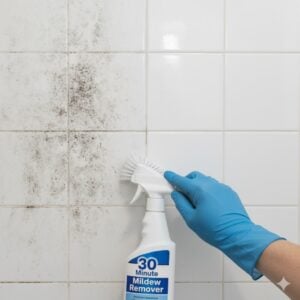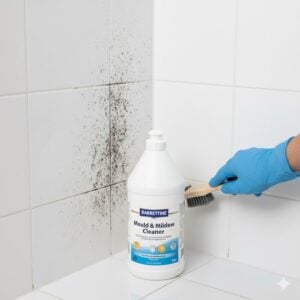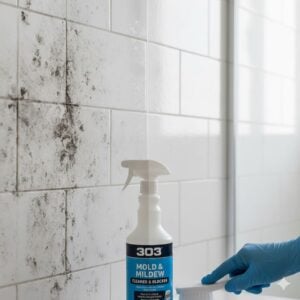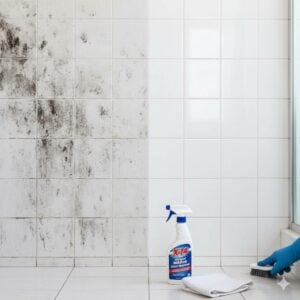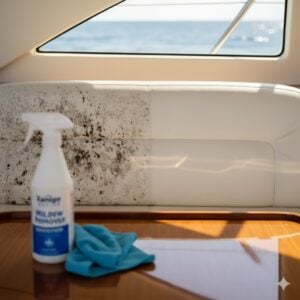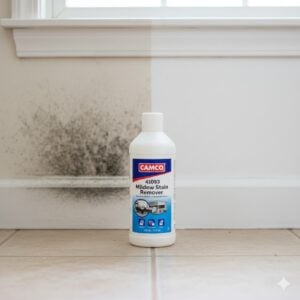That musty smell coming from your laundry? It’s likely mildew in your washing machine. And if you’re living in the UAE where high humidity is part of daily life, the problem can sneak up fast—especially if you wash often or leave the door shut between loads.
We wrote this guide to help you understand how mildew forms, how to clean it out effectively, and how to prevent it in both front-loading and top-loading machines. Clean laundry shouldn’t smell like a wet towel—and it doesn’t have to.
Table of Contents
Toggle1. Why Does Mildew Grow in Washing Machines?
Washing machines are a breeding ground for mildew because they are damp, dark, and rarely dry completely. In Dubai and other Emirates, the high indoor humidity combined with frequent use and tight laundry spaces makes it worse.
Here are some of the most common causes:
- Leaving the door closed after washing, trapping moisture inside
- Using too much detergent, which leaves residue mold loves to feed on
- Washing with cold water only, which doesn’t kill fungal spores
- Rarely cleaning the rubber gasket (especially in front-loaders)
- Soft water or high humidity indoors that keeps things damp longer
Mildew typically shows up as a slimy buildup around the door seal, detergent tray, or drum, and smells like a sour towel. If you notice clothes smelling off even after washing, it’s time to deep clean your washer.
2. Signs You Have Mildew in Your Washer
Sometimes mildew is visible, but not always. The smell is usually the first clue. Here’s what to look (and smell) for:
- Persistent musty odor inside the drum or on freshly washed clothes
- Black or grey slime on the door seal or inside detergent trays
- Water not draining properly, causing residue buildup
- Unusual spots or buildup in the drum or on clothing
These are not just cosmetic issues—they can cause skin irritation, worsen indoor air quality, and even affect the longevity of your machine if left untreated.
3. How to Get Rid of Mildew in Your Washing Machine
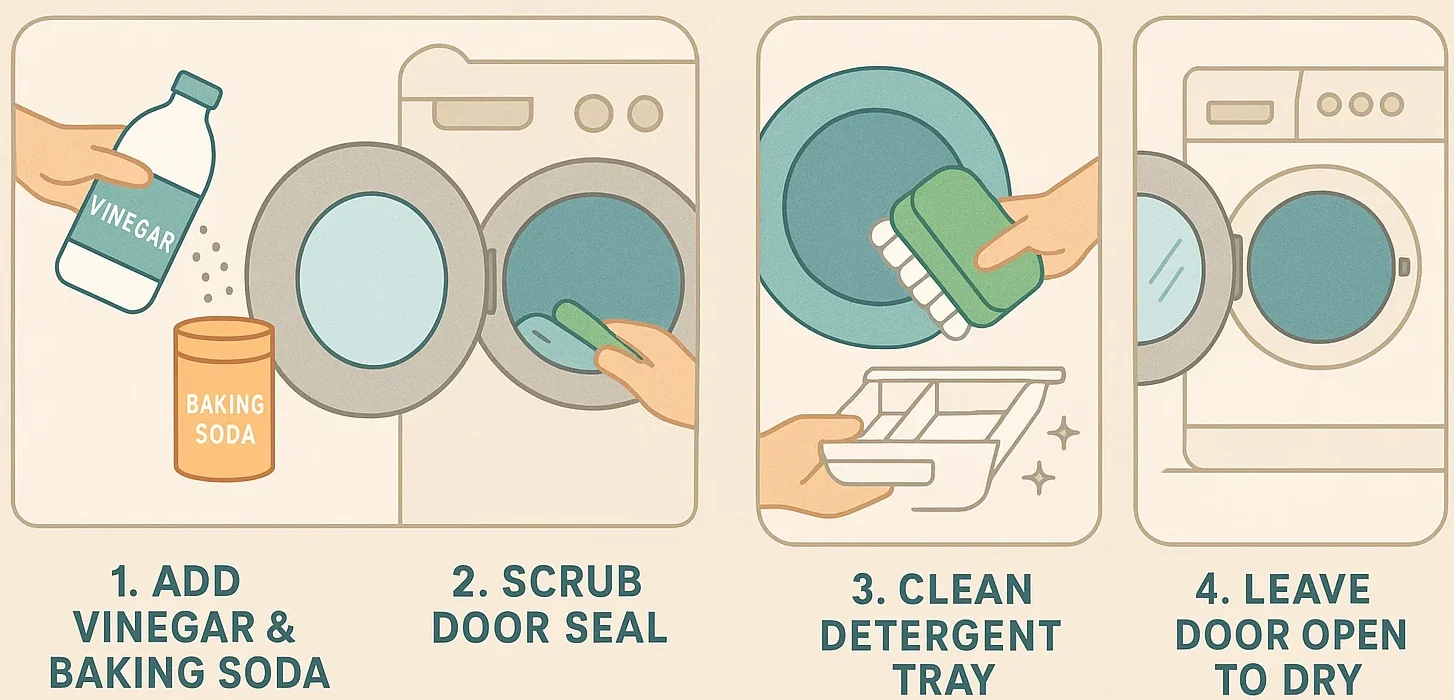
There are two main approaches: a full deep clean, and then a maintenance routine. Here’s how to tackle a serious mildew problem:
- Run a hot wash with vinegar and baking soda
Add 2 cups of white vinegar to the detergent drawer and 1/4 cup of baking soda into the drum. Run the machine empty on the hottest setting. This combo kills spores and breaks down mildew gunk. - Clean the rubber door seal
Use an old toothbrush and a mixture of vinegar + dish soap to scrub the seal area. Pay attention to folds and hidden spots—mildew loves to hide there. - Wipe the drum and detergent drawer
Remove the detergent tray if possible and soak in hot soapy water. Wipe down all internal surfaces with a vinegar-soaked cloth. - Leave the door open to dry
Let everything air out for a few hours after cleaning to ensure no moisture is left behind.
If that doesn’t solve the issue, or the smell keeps coming back, it might be time for a professional internal cleaning. We offer advanced mold and mildew treatment for washing machines in homes across the UAE. Click the contact button on the right-middle of this post to learn more.
4. How to Prevent Mold and Mildew in the Future
Prevention is far easier than constant cleanup. Here are our top tips to keep your washer mildew-free year-round:
- Always leave the washer door open for at least an hour after each use
- Wipe the rubber seal and tray weekly with a vinegar-damp cloth
- Use only the recommended amount of detergent—especially in HE machines
- Run a monthly cleaning cycle with vinegar or a store-bought washer cleaner
- Make sure your laundry room is ventilated to reduce trapped moisture
If your laundry area is in a basement or windowless room, consider using a small dehumidifier or installing an exhaust fan.
5. Can Mildew in a Washing Machine Be Dangerous?
Yes—especially for people with asthma, allergies, or weakened immune systems. Mildew releases spores into the air, which can worsen indoor air quality and cause respiratory irritation. It also transfers easily onto clothing and linens.
Continued exposure can cause:
- Skin irritation or rashes from mold-contaminated clothing
- Coughing, sneezing, or headaches from airborne spores
- Bad odors throughout your home if the laundry is done frequently
Don’t ignore the signs. If the mildew problem returns often, you might be dealing with a bigger mold issue inside your plumbing or wall cavities. Our Bio-On team is equipped to perform deep inspections and targeted remediation.
Conclusion
Mildew in your washing machine is more than a smelly inconvenience—it’s a health risk and a sign of deeper moisture issues. But with the right steps, you can clean it out and keep your washer fresh year-round.
We recommend a monthly deep clean, always drying the drum after use, and addressing any leaks or dampness in your laundry area immediately. And when in doubt, bring in the professionals—because mold never waits.
Ready to breathe fresh again? Just click the contact button on the right-middle of this post, and we’ll help you restore hygiene to your laundry space, fast and safely.








